Anglophile that I am, I began my love affair with British crime with the traditional English village mystery. These stories came into their own in the years between the wars, most fitting neatly into the puzzle novels that are considered to belong to the Golden Age in British crime fiction. There are fine examples from Agatha Christie, including The Murder of Roger Ackroyd, Murder Is Easy, and the iconic The Murder at the Vicarage, published in 1930, which features Miss Jane Marple in her first full length novel and provides our first view of the village of St. Mary Mead. These were followed village-centered mysteries by Ngaio Marsh, Dorothy Sayers, and Margery Allingham, among others.
I long considered P.D James’s Adam Dalgliesh novels to have marked the turning point between the puzzle mystery and more modern psychological interpretations of the genre, but on recent rereading, Cover Her Face, the novel published in 1962 which introduces Dalgliesh, is in essence a village mystery and its characters, the unpleasant upper class family and the wronged servant, clearly draw on their Golden Age predecessors. The village mystery ebbed through the Sixties and Seventies as the crime novel moved further into noir territory on both sides of the Atlantic, but by the Eighties it had begun to morph into something new and sometimes unexpected. Here are nine standout novels from the Eighties onwards, from the delightfully wacky to the deeply psychological.
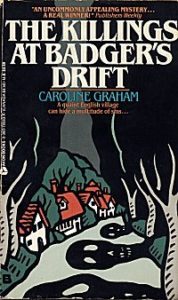
The Killing at Badger’s Drift, by Caroline Graham
No list of English village mysteries from the last four decades is complete without Caroline Graham’s 1987 novel set the fictional county of Midsomer and featuring the intelligent and likable Detective Inspector Tom Barnaby. Ten years later, this and the six subsequent novels would be adapted for television as Midsomer Murders, which is still going strong twenty-two years later.
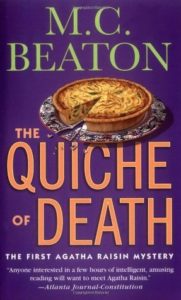
The Quiche of Death, by M.C. Beaton
2003 saw the advent of M.C. Beaton’s Agatha Raisin, a widow who has sold her London PR firm and moved to the fictional Cotswold village of Carsley in pursuit of a peaceful life. Notable for its laugh-out-loud humor, Beaton’s less than likeable Agatha is one of the few (other than the imitable Jane Marple) female protagonists in a village mystery. Recently adapted for television with the delightful Ashley Jensen as Agatha, and the Cotswolds villages where the series is filmed in a co-starring role.

The Man with a Load of Mischief, by Martha Grimes
Scotland Yard detective Richard Jury and his side-kick Melrose Plant make their first appearance in 1981 in Martha Grimes pub-themed series. The pub in this case is The Man with a Load of Mischief in the fictional village of Long Piddleton, home to Melrose Plant and his annoying American aunt, Agatha. While this first Grimes novels draws on humor and familiar village tropes, Jury is melancholic and multi-dimensional.
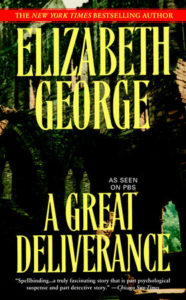
A Great Deliverance, by Elizabeth George
With the publication of Elizabeth George’s A Great Deliverance in 1988, the village mystery moves firmly into the territory of psychological suspense. George’s Inspector Thomas Lynley is, like Sayer’s Peter Wimsey, titled, but Bunter the manservant has been replaced with Detective Sergeant Barbara Havers, a working class officer who often resents her boss. With its grim Yorkshire setting, violent crime, and shocking denouement, A Great Deliverance broke the mold.
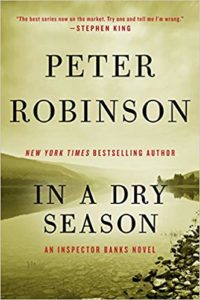
In a Dry Season, by Peter Robinson
Moving on a decade to 1999, Peter Robinson’s 10th novel featuring Yorkshire detective Alan Banks takes Banks to the once-drowned village of Hobb’s End and the unidentified bones of murdered young woman. This is a complex, multi-dimensional novel, one of Robinson’s best. It weaves a gritty investigation with the pastoral vision of Yorkshire, trying in haunting threads from the past.

On Beaulah Height, by Reginald Hill
Reginald Hill’s 1998 masterpiece is also set in a village emerging from a drying reservoir. Detective Inspector Andy Dalziel and Sergeant Peter Pascoe tie the disappearance of three children in the past to the disappearance of a child in the present, uncovering the secrets of the cursed village of Dendale and its residents. With its ominous beginning and wrenching ending, this is Hill at his very best, and perhaps one of all-time favorite crime novels.
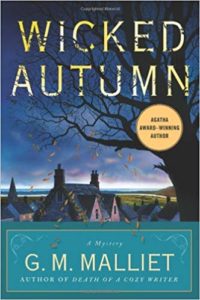
Wicked Autumn, by G.M. Malliet
In 2011, G.M. Malliet debuted the first in her Max Tudor series with a fresh take on the village mystery. Max Tudor, former MI5 agent, now ministers to his congregation in the tiny village of Nether Monkslip. But village life is not as idyllic as he imagined, and he soon must call on his old skills to solve a murder. A wickedly humorous skewering of the village trope, with modern sensibilities and depth of characterization.
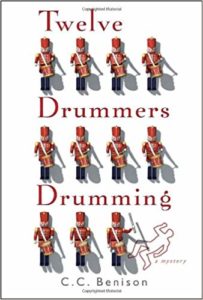
Twelve Drummers Drumming, by C.C. Benison
2011 also saw the publication of C.C. Benison’s first novel featuring widowed vicar Father Tom Christmas. Tom moves to the picturesque hamlet of Thornford Regis, looking for a new start for himself and his young daughter. But like Malliet’s Max Tudor, Tom finds village life to be fraught with challenges, including murder. Characters are portrayed with depth and subtlety, and while there is humor, the dangers are real and the losses profound. This three-book series (to date) is a personal favorite.
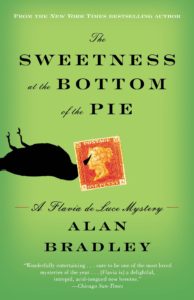
The Sweetness at the Bottom of the Pie, by Alan Bradley
I’m drifting a bit into historical territory by including Alan Bradley’s 2009 Sweetness at the Bottom of the Pie, but this debut is too delightful to leave out. In 1950, in the village of Bishop’s Lacy, eleven-year-old Flavia de Luce, an aspiring chemist with a passion for poison, wishes something would happen to relieve her boredom. When a man dies in the vegetable plot at Buckshaw, her family home, Flavia is on the case. Charming, deftly plotted, The Sweetness at the Bottom of the Pie is an irresistible introduction to a unique heroine.

















